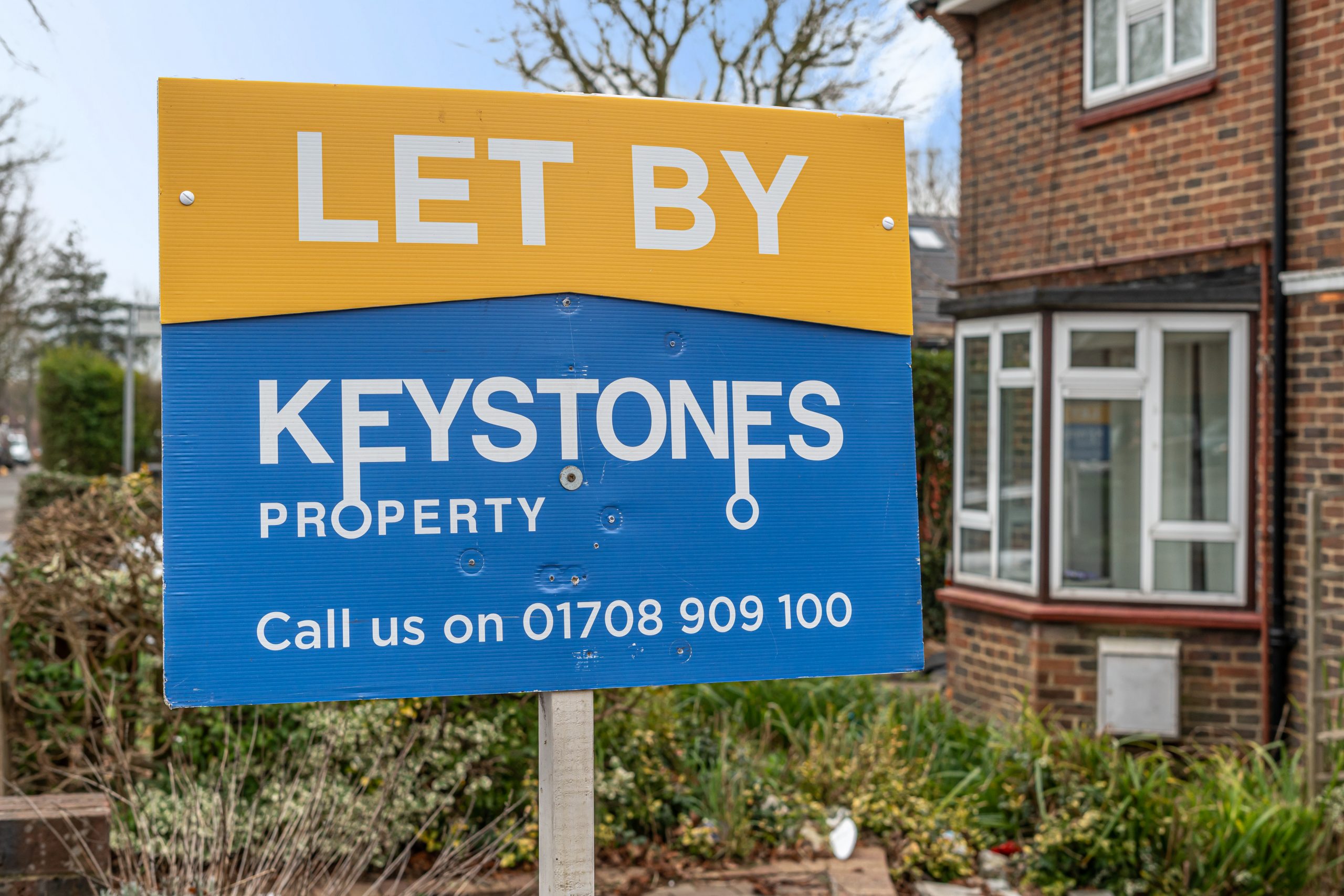Below is a step-by-step process of what you will have to do when buying and selling a house in the UK.
I will also add my advice into the equation of what I see most of the issues that buyers and sellers alike come up against when starting the process too.
Step 1: Get your property valued
Please see my blog on how to value your own property
The first step in the process is to obtain a valuation of your own property initially, this is the most important starting point, you will need to find out how much your home is worth. My advice is to obtain three valuations on your home to get a good gauge of what your home is worth.
If you do not want to invite the estate agents round to your home, then you can take a look online and value your property yourself, my advice is NOT to use Zoopla as it doesn’t always give you an accurate valuation of your home.
The best practise is to look at RIGHTMOVE SOLD PRICES and also take a look at the local market as a whole. Put in a search within a ¼ mile of your postcode, the same number of bedrooms and tick to ‘include SSTC’ for you to gauge a rough indication of your house price. If your property is unique, then you may need your estate agents to come round, but if it is a three bedroom house in Romford and a street near to the town, then you should be able to value it yourself.
Once you have your approximate figure (doesn’t need to be exact) then you can move on to the next step.
Step 2: Speak to a Mortgage Broker
My advice is to speak to a Mortgage broker, do not go directly to the banks (see my blog on Why it is important to speak to your broker as opposed to your bank).
Once you have the approximate valuation of your home, you can take this amount with you to speak with a mortgage broker and find out how much you will be able to afford. It is imperative that you speak with a broker as early as possible in the process, even up to one year away, especially if you are self-employed or an owner of a Ltd Company because the mortgage and your company accounts or self-assessment will need to align with one another. Depending on the process, lender and the rates, your mortgage could be issued based on an average of what your Ltd Company has turned over and profited over a period of 1-3 years.
Every person(s) circumstance is unique and different, some people are self-employed, directors, and employees. Some people have children, no children, maternity, paternity, sick leave, absence, commission, CIS or zero contract hours. So, with everyone’s circumstances being unique and different, it is important that you speak to a mortgage broker in the first instance as different mortgage lenders will suit different people and their circumstances, most brokers have a range of the whole market to choose from (a bit like a travel agent) rather than only being able to with one bank and one bank.
A broker will be able to tell you how much you can afford and what the approximate monthly payments will be on that property.
‘Fail to prepare, prepare to fail.’
Step 3: Work out the numbers
Now that you have an idea of how much your property is valued at and what your mortgage situation looks like, you can go shopping (at least virtually) and see what you can get for your money.
My advice here, before you do anything is to work out your numbers.
You should have a rough idea of how much you can sell your home for and much you want to spend on a purchase. From here, pick up a blank A4 piece of paper and record the valuation price, and new property price at the top of the page.
Write down, how much your monthly payments will be and what your rate is, get everything ideally on one sheet of paper as a point of reference.
You will also need to work out your moving costs:
Look online for:
Stamp Duty Calculator: Stamp Duty Calculator – New Updated Stamp Duty Calculations
The stamp duty will be the most expensive extra that you will need to pay, this is a land tax that must legally be paid to the government, and your solicitors should be taking care of this.
Conveyancing Costs: This should be no more than £2,000 inc VAT for buying and selling a home, it may be slightly more if there is a leasehold involved because more work is involved with the management company, LPE1 Forms and Leases.
Mortgage Costs: You should get an idea of your application costs on the mortgage, usually a £300-£800 Application fee depending on the broker and complications of the application. The rest is rolled up into the mortgage, FCA Regulations mean that it will be displayed in the paperwork exactly how much you are paying and for what.
Removals: Get some quotes, but for a standard 3 Bedroom House it shouldn’t be more than £1,000-£1,500 for the basic service. Get 3 Quotes.
Step 4: Conveyancing Quotes
It is really important that you obtain some idea of how much you will have to spend on conveyancing and get a detailed quote, this again should be written down and included on that piece of A4 paper.
My advice is not to go with a cheap conveyancer if you value your life (or your sanity). Some of these online conveyancers can be a complete headache and will take years away from your life. Buying and selling a property is ranked the 3rd most stressful thing to happen to you in life after the death of a loved one and divorce, my advice is not to add any more stress to an already very demanding process.
I’ve written previously about why it’s important to choose a good conveyancing solicitor.
You don’t need to pay big money, but you want to be able to communicate with your conveyancer and for them to be working with your best interests at hand. We always advise you to use someone local, so you can drive to them (if you need to), they may have dealt with similar properties in the areas on similar or even the same roads, therefore, know all of the pitfalls, issues and regulations with the local councils. Also if a road has had an issue previously with flooding or subsidence, then generally know because they have worked on these files previously.
Obtain 3 Quotes; one online quote and two local firms are my advice, add a fourth if you are still unsure.
Step 5: Get your documents in order
Whether you are selling a house or a flat, there will be key documents that you will need to keep together in order so that your new buyers solicitor will have them to hand.
Any building work such as extensions, loft work, new windows, loft insulation, major electrical works or any planning consent that was needed must be recorded and you must include a record of these works.
Start compiling important and relevant paperwork to do with your home, again, think logically about this, what was I given when I bought my place? It will be similar paperwork unless you have done major work to your place.
Please note, that if you are selling a leasehold there will be extra work and it will cost more because there could be cladding on the building that needs to be addressed, a management/leasehold pack that needs to be bought (before moving and lasts 6 months so don’t buy too early) and there could be Section 20 Works Orders on the block. Make sure you look into this prior, it will save you a lot of time in the process.
Step 6: Get the estate agents round & marketing the property
Different estate agencies have different values and work differently. Work out what estate agent you want to partner with, what type of service you want and if you want to go down the local agency route or the online route.
I would recommend obtaining at least three estate agency quotes and getting the agents to visit your home to run through their services.
My advice would also be to get their opinion on what needs to be done in the house. Does it need to be de-cluttered? Any repair work that needs to doing? Does it need to be updated? Is there any advice on Probates, Mortgage, or solicitors that you need to find out first? Use this time to ask the estate agent any questions.
Once you have chosen what agency you would like to initiate, then you can start the marketing process and the selling process.
Blog about online versus high street estate agents
Step 7: Agreeing a sale
Should you choose the right estate agency with the service that you are after, they should be negotiating the offer on your behalf. If you are using an online model that doesn’t offer this service, then you can tie the offer up yourself as this is the service that you have chosen.
However, the longer it takes to agree on an offer on your home varies depending on a few things. Firstly, the price – doesn’t take a genius to figure out that the lower the price, the more offers and interest you will receive, but my advice is to be competitive and listen to the agents in relation to price. We advise talking to your agents asking for a realistic price and mentioning that you won’t be choosing an agent that goes in ‘toppy’ to achieve your business. This way, you will be more likely to receive a true reflection on the market and not a sales ploy, from there you can decide if you want to market the property at something slightly higher to see what you can achieve.
However, please note that once your property goes live online, there is a 2–3 week window that your property is new and sought after, especially in a market where supply is low and demand is high, it is here within this window that you will receive the most interest, the most enquiries, the most viewings, offers and can sell the property for the highest price. The longer it goes on, the chance of achieving the highest price diminishes.
So, it is important that you gauge the market and keep it competitive.
Make sure an agency does its due diligence in financially qualifying the offer as much as it can.
We have a blog on this too.
Step 8: Choosing a solicitor/conveyancer
In step 4, you should have received your solicitor’s quotes. Once offers are happening on your property, you should be able to start the ball rolling on your conveyancing service. My advice is once an offer is accepted, you can sign up with your solicitor and get the ball rolling here.
You should have documents in order as per Step 5 alongside the quotes in Step 4, so this process should be easy.
The biggest issue that you will have is filling out the property information form and the fixtures and fittings forms. These can take time, so my advice is to have all the paperwork in Step 5 to hand, sit down with a cup of tea and fill out the paperwork. Allow an hour to complete this paperwork, do not avoid it because it will not go away. You will just have to ‘bite the bullet’ and fill out the documents. The quicker these are done, the quicker you can move on, but this is the largest amount of paperwork that you will have to do in the conveyancing stage. These forms will dictate your buyers’ enquiries into the property and what your conveyancer will use to respond.
Step 9: Go Shopping
The exciting part is the part where you can shop for your next home.
My advice is to have some sort of list of requirements that you want to have. Categorise them into A, B, and C on your requirements. For example, I need a driveway, a large garden, two double bedrooms, etc…
A. Is the must haves and you cannot compromise on this.
B. You would love it but could compromise or build it later.
C. This is a bonus but isn’t going to come into your decision.
Categorising these requirements will make your search easier.
Book out a full day to do viewings, my advice is to see between 5 – 15 properties to get a broad range of what you want vs. your requirements.
The more you know what you want and the area you want to be in, the fewer properties you will probably need to see, and the more unsure, you may need a few different dates to conduct a certain number of viewings to get a real good feel for what your family wants and needs.
My advice for this is simple. Don’t procrastinate, get out there and just start viewings without hesitation.
If you have children, try as best as possible to arrange childcare, you don’t want to be viewing with children who want your attention all the time, so it is important to focus on your viewings.
Step 10: Make the Offer and speak with your broker
Once you are ready to make an offer on your next home, speak with your mortgage broker and run through what your next steps are. Get an AIP (Agreement in Principle) in place (which shouldn’t take more than 30mins) and send the estate agent your IDs, Proof of Address, Proof of funds and AIP so that the agency knows that you are organised and won’t play around.
This will put you at the top of the agency’s list, estate agents are busy and look for good form and character from a client making an offer. No one wants a ‘wishy-washy’ disorganised buyer because this can easily cause problems for their vendor down the line.
Step 11: Offer agreed
Once the offer is agreed upon, try to get the property off the market and check that it is. You don’t want to be gazumped. Also, let your solicitor and mortgage company know so that they can get the ball rolling on their front.
Check if there is a chain because this will give you an indication of how long the process could take.
Step 12: Obtain a survey report
If you are obtaining a mortgage, then the bank will want their own surveyor to make sure the valuation of the property is correct and that you are not overpaying for the property.
However, my advice is to get another survey or an independent surveyor to go through the property to show you what issues or potential issues you might come across. You don’t have to act on the issues and take a lot of it with a pinch of salt. Sometimes a survey report can seem as though a house is falling down. If the property is over 100 years old, there will be issues but you want to know what you could be walking into.
Even more so if there have been alterations such as conversions or extensions. You want a surveyor to see if there have been any structural movements and you are paying for a surveyor to have foresight into the issues of the future on your potential home.
Again, if things are flagged up on the survey report, then try to pay a trusted builder to investigate the property.
There are three different types of surveys; a mortgage valuation, homebuyers or a structural survey.
Step 13: Obtain Removal Quotes
Like what you did with the estate agents in getting them to quote you. Obtain approximately five removals quotes, there are different services that you can have and different companies. Don’t just go for the cheapest but look at the service you want. Get this done early so that you have two different removal company options when you start to speak about completion dates because their availability might not be there and don’t want to be running around panicking.
Step 14: Communication and Completion Dates
Bear in mind, that the house buying and selling process can be very stressful, so this blog is to make sure that you are prepared to make things as stress free as possible.
Make sure that you are not just leaving it to the powers that be to progress your sale. My advice is to be speaking with both estate agents as well as solicitors to make sure that things are progressing and moving along. Listen to the estate agent if they are telling you that your solicitor is not doing their job properly and hold your solicitors accountable.
Moving home is stressful enough, without the professionals that you have hired not communicating, so my advice is to touch base once per week with all sides so that you know things are moving in the right direction or even more importantly if there is a problem, and it needs to be addressed.
Step 15: Exchange and Completion
Exchange and completion are different things. Many movers get this mixed up. If there is a chain (which means more than one property) then every single person in the chain needs to be agreeable to a completion (your moving date) date before an exchange will be allowed to happen. Your solicitor is in place to protect you and it is illegal in the UK to leave somebody homeless (unless voluntarily done) so the exchange of contracts (which is legally binding) will only happen once everyone can agree on the set completion date.
When you exchange contracts, it is usually a 10% deposit that gets lodged with the opposing solicitors firm and you are signing that you are legally required to forfeit that 10% to cover costs should the completion date not happen and costs incurred.
The completion date is the date that you are moving and will receive keys. The rule of thumb is that after 1pm you should be ready to receive your keys, however, it does depend on how many people are in the chain at this point and how quickly the solicitors accounts departments are sending the money across and how frequently the receiving solicitors accounts are checking. This can take the whole day depending on how many people are in the chain and who is dealing with the process.
The estate agents have no control over this and will not release the keys until they receive a call from the solicitors that they can release the keys.
Keys will be released once funds are in to complete your sale and purchase.
More from the Keystones learning hub
Keep updated with what's going on in your local area. Our latest news provides up-to-date information on everything regarding the local property market, for everyone including homebuyers, sellers, tenants, and landlords.
Section 21 – Abolishment

19 December, 2024
Will Pets Be Allowed In Properties With The Renters Rights Bill?

19 December, 2024
Banning Discrimination – Renters Rights Bill

19 December, 2024

Come and see us face to face
Keystones are Open 6 days a week. Pop in, have a Tea or Coffee as we always have people on hand to help you.
Keystones Property
-
Keystones Property Collier Row
13 Clockhouse Lane, Collier Row, Romford, Essex, RM5 3PH, United Kingdom -
Email: [email protected]
-
Telephone: 01708 909 100







